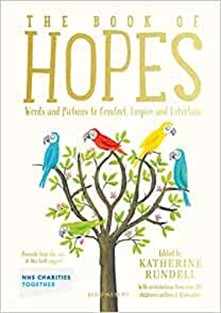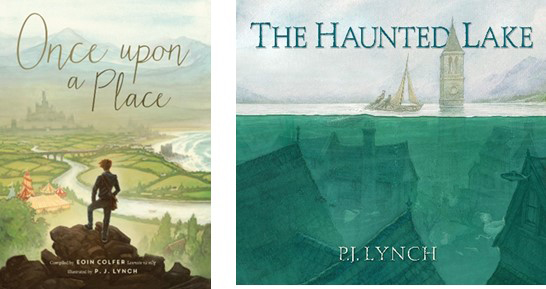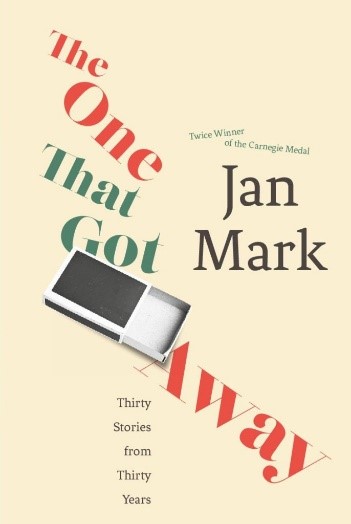The very short read for the time-pressed teacher
Now, more than ever, time is of the essence. And in teaching that is really, really saying something. Time is not exactly our most reliable or accommodating friend, especially when we have whiplash, what-day-of-the-week-is-it-now U Turns to contend with. With this in mind, I am approaching this blog strategically. We could all do with as much strategic thinking as we can get at the moment. So, I am cutting to the chase and sharing the resource that underpins this blog upfront.

You can read on if you choose to. Section two makes some recommendations of great individual stories, and also offers some suggestions for how to get the most out of others. Section three goes a bit deeper and offers a rationale for prioritising the sharing of short stories, and considers the place of them across the primary phase, and as part of your reading provision/offer. But if you just want to take the book list and run, here it is, a specially updated list of really rather good short story collections for primary-aged children:
Some titles are more mature than others – be it in terms of reading challenge or nature of content. This is explicitly noted in the list. Please preview prior to sharing in class.
The medium length read: some recommendations and suggestions
For readers of all ages, Janet and Allan Ahlberg are giants in the field of (short) storytelling. Good stories, well told. Simple. As. That. I must thank Jo Bowers, Principal Lecturer in Primary Ed and Associate Dean at Cardiff Metropolitan University, for introducing me to The Clothes Horse, their wonderfully inventive collection. My personal favourite from the book is the ridiculously charming Life Savings. I think the learning opportunities, in terms of follow up discussion and thoughtfulness, will speak for themselves. You'll be left with a priceless image to hang onto every time you see some unexpectedly childish behaviour from those allegedly old enough to know better. The collection is small, but perfectly formed. Now the less positive news. As far as I can tell, it is not currently in print, so I had some reservations about sharing it. But it is too good not to. You can buy it used – get in there quick. (Quicker!) You can also join me in mounting a campaign to get it back in print. Allow your young readers/listeners to soak up the storytelling voice that runs through each story, much as it does across their other works.
For readers in lower key stage 2, I would highly recommend Wild Stories by Colin Thompson. This is another book that is not always available through the most convenient channels. Please don't give up if you only see an expensive option. You should be able to order this as an import. It is a collection of gems. Quirky and beautifully written, it is a series of linked stories set in a neglected garden as it turns wild following its owner’s departure. There is so much to recommend about this book, and its varied offering of poems and short stories, but one aspect that really struck me was the ways by which we come to have a real sense of place. I probably don’t need to explicitly state the grammar elements that support this, so I won’t. They take up enough space elsewhere, but if you are looking for some rich examples of how time, place, mood and atmosphere are conjured into being, look no further. My personal favourite selection is Sid the Mosquito, as well as the book’s opening sections.

Our Reading Fluency Project team have previously shared their own recommended shorter reads – just right for a session devoted to developing prosodic or performance reading. You can catch up with these here:
And most recently, KS3
From this later blog, Spells for home by Stephanie Burgis from The Book of Hope: words and pictures to comfort, inspire and entertain, has one particular story recommended for use to develop phrased, expressive reading. You can find an online edition of The Book of Hopes.
Once Upon a Place, is probably my personal favourite of the collections, though it faces some stiff competition. It may be a personal bias in that it gathers a bevy of Irish writers, but it might just be because it is brilliant, with a range of story genres (and poetry) for readers in Upper KS2. To seal the deal, PJ Lynch’s beautifully crafted illustrations appear throughout. The opening story, Gren’s Ghost gets things going nicely. Colleagues have shared it to very good response and effect in years 5 and 6. Just to be clear though, despite the fact that I am about to refer to another ghost story from this book, it offers a range of genres. I might just mention the poem Bus Stop - I have taught this in several year 5 classes now and the discussion has blown me away each time. One or two phrases or concepts need a little bit of live scaffolding, then watch the ripples of insight radiate wider and wider.
My personal recommendation from Once Upon A Place works well with complementary books and other texts. Stream Time by Oisín McGann is another ghost story of a kind – a most unusual kind. Read this for a fresh spin on a tale of the undead, packed with voice and framed in the most unusual way. You will certainly want to explore and discuss the choices that inform its narration. Having shared the story, consider opening up the ideas and themes of the story by sharing the more recent The Haunted Lake, an appropriately haunting picturebook that also benefits from the artwork of P J Lynch. Here though, Lynch also provides the words – and there are plenty of them forming an entrancing, hypnotic tale. This is a short story vividly drawn in both word and picture. Draw out the thematic links and points at which the two stories reflect one another and then note the ways in which they differ. You will quickly see the ways in which the Haunted Lake shares murky waters with Stream Time. Given the themes that we have now opened up, go deeper still by moving onto David Almond and Levi Pinfold’s The Dam. It’s a brilliant book. Consider in particular the fabled “flooded” homesteads that surround The Dam and how this concept is mirrored overtly in The Haunted Lake. Weaving these thematic threads across a series of rich reading episodes will deepen thinking as it develops conceptual, thematic and emotional understanding.

Nikki Gamble’s Story Shop contains – amongst many other gems – Ray Bradbury’s brilliant All Summer in a Day. This story – like all others – is very much more than a grammar exemplar. It offers up stunning writing, challenges children’s preconceptions of what good writing actually looks like, and then the ending thoroughly messes with their moral compasses. Another great story shared here is Nule by the uncannily good and much-missed Jan Mark. Mark deserves her own paragraph and more but let me just finish this paragraph with a clear warning: no matter your age, no matter your capacity for rationality, do not read Nule if you have a certain type of bannister and you are about to settle down for the night.

Remaining with Jan Mark, last year a fantastic – and in places challenging – collection of her stories was gathered. The One that Got Away is a joy of razor sharp characterisation, acute dialogue, and some very effective stings-in-the-tails. Nule appears here too. However, the final selling point I want to highlight is just how enjoyable and thought-provoking some of Mark’s stories are for teachers. The One That Got Away is three pages of educational bliss. But it’s The Choice is Yours that I really want to recommend. Bit-by-bit, exchange-after-exchange, a small heartbreak builds. It’s a back-and-forth kind of story with one unfortunate child trapped in a to-and-fro between adult agendas. Characterisation is forensic across line-by-line perfection. And the ending is quietly, mundanely devastating.
The longer read: rhyme and reason
Why do I think short stories are worthy of consideration as a strand of your reading provision and a thread woven across or around your curriculum for literature? If we are short of time, it makes sense to shorten the reads. And I don’t just mean the immediate here-and-now of time and task management, and the contextual pressures of our responses during lockdown. Each child that we teach has one reading journey unique to them. Some will be brim-full of all kinds of genres, styles, concepts, characters and all those wonderful words that conjure them into a mental life. Some might be reliant on the reading journey that we map out. There’s little more rewarding than the shared journey through a good novel - I remember this from my own childhood (Antonia Barber’s The Ghosts in particular, thank you Mrs Jessop) and from reading aloud to my class (Coraline was collective reading at its best – not for the delicate). But then there are only so many novels that we can get through across the year that we have a particular class of children. Novellas can help to extend the range of reading encountered in our story time sessions and there have been some crackers in recent years (perhaps another blog). Short stories can extend this range further still, and so much of the finest writing comes distilled.
For now, this sharing of great stories might be a short blast delivered through online read aloud sessions. However, I’d ask you to consider, if you haven’t already, whether there is a space in your (more usual) curriculum to offer a provision or spine of high quality, short stories. A good short story will likely have benefits for all readers across the years, across the phases. They provide a singular, contained, and complete reading experience, and the effect may well be profound in terms of developing a sense of narrative structures. Still the benefits run far deeper than that. Stories are so important in learning, in the acquisition, reshaping, and expression of all kinds of knowledge. A story that subtly makes use of stylistic features can influence writing without you highlighting it. Carve out space for your reader-writers to read/mull/absorb and the benefits will most likely come to the fore in due course. This does not all have to happen within the confines of the classroom and amidst the pressures of the timetable. Reading a powerful, thought-provoking story at home will likely go down far better than usual home-reading routines for our more reluctant readers.
Done well, short stories are a tightly effective form, just like poetry, and they are perfect when time is short. I think they have a major, sometimes underdeveloped, part to play in schools. I’ve written elsewhere about the powerful contribution that short stories have to make. In that blog I shared a quote from Graham Greene I like the central point of the quote, though his choice of pronoun needs some thought, so here it is:
“With a novel, which takes perhaps years to write, the author is not the same man he was at the end of the book as he was at the beginning. It is not only that his characters have developed–he has developed with them, and this nearly always gives a sense of roughness to the work: a novel can seldom have the sense of perfection which you find in Chekhov’s story, The Lady with the Dog.”
Graham Greene
This perfection or, to go to the Latin roots, this completeness is one selling point. The satisfaction of knowing how things turn out – or even sometimes the frustration of when things either don’t turn out how we hoped or turn out in ways that ask us to fill in some gaps. This – as much as a laugh, a scare, or a moment of sadness - is writing that affects and so is writing for effect exemplified in the most powerful way. Another selling point is that with a well-designed spine of short stories, mapped across the years, as a minimum entitlement, we can ensure that we offer up a diverse range of styles, forms and voices. Enriched readers are all the more likely to be rich writers. To quote Debra Myhill, we further enhance the potential to write with a consciousness of “infinite possibilities” only here we not only mean in terms of word , phrase or clause level choices, but also whole text level awareness of the possibilities of writing to change how we think, feel, and how we perceive the world around us. Which, when we think about it, describes teaching. Sharing well-chosen, well-delivered short stories, amongst all the other things I have offered, is good teaching. And it’s as simple – and brilliantly complex – as that.
A postscript on developing writing that meets the GDS standard
Way back in 2018, I wrote a blog that was focused on setting up a new series of blogs to support the development of writing that could be judged as satisfying the GDS standard set out for Year 6. It aimed to do so through means that we might consider timelessly good English teaching, rather than any kind of statutory hoop-jumping or feature cramming. Instead it was going to look at some key ingredients that I believed were most likely to support the development of what we might consider to be good writing, and - because you are teachers working in a particular system with a considerable dash of accountability – would also support in meeting this specific marker of writing attainment.
This blog on short stories reflects part of the intended blog (under the first heading below) relating to reading mileage. I think reading mileage is often thought about in terms of either overall volume of words or books consumed, and perhaps not so often the range and diversity of styles and voices we encounter. The unique destinations that those miles lead us to, through, and beyond. A good short story spine offers a whistle stop tour to all manner of new and exciting places. Just remember to send us a postcard.
To wrap up, I’ve included an outline of the proposed blogs as a renewed commitment to completing the series, for when the times are right.
Here are the intended focus areas:
Reading mileage: distance and destinations the provision of a rich, broad and deep reading diet.
The importance of oracy This has always been critically important but I am hopeful that recent books by Robin Alexander and Isabel Beck, Margaret Mckeown, and Cheryl Sandora will relight the fuse for dialogic practice. The skilled management of classroom dialogue about written language can be extremely powerful in enhancing both reading and writing, as well as talk itself.
The Writer's Workshop: crafting and redrafting – the move to reduce written marking and to explore the potential of more immediate feedback has opened a new window for the processes associated with writing conferencing as described by Donald Graves and others back in the eighties.
Time is (it) on your side (?): making space to read, think and write – this speaks for itself; time will always be our enemy so forging connections across various modes of literacy instruction will support us in maximising the learning gains from our time/effort input.
Different voices; different lives – here we will consider how we can develop voice and register drawing upon concepts, models and practices that are currently perhaps not as well-known as they should be.
Cohesion - wherever (and whenever) we go - here we will look at the central importance of cohesion, and how a well-developed grasp of chronological writing supports not only clarity in writing, but the ability to reshape, reform and - where appropriate, and where we dare - bend and distort our writing for particular effect. I will no doubt mention verbs at some point. Graves will get a look in once more. As will Barrs and Cork's The Reader in the Writer. They're all rather handy.


